Part 5: 460-480 YE-Trade and Traffic
Trade and Traffic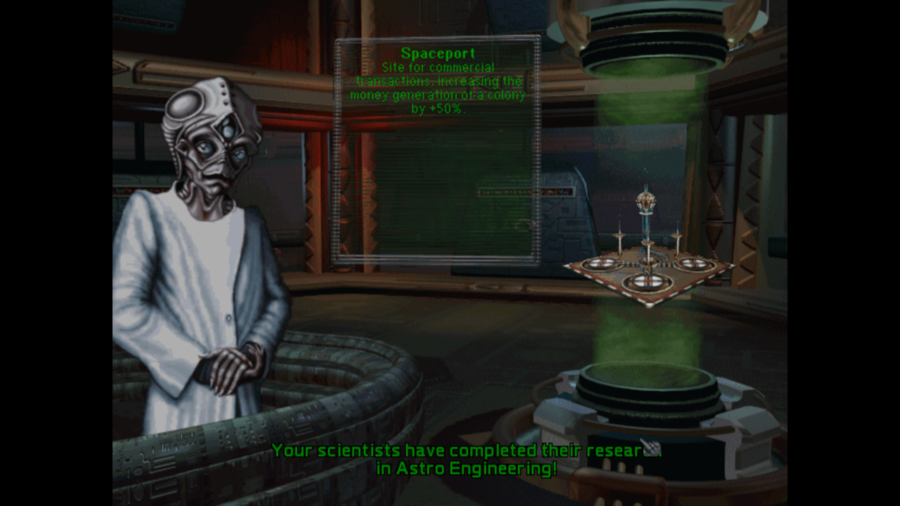
Continued work by shipping, transport, and engineering corporations paid off by 464 YE, when major spaceport facilities were designed and constructed on both Nares and Sedal. The expense of shifting cargo mass to orbit was greatly reduced by the construction of major cargo mass drivers built into the surface of the planet, capable of launching cargo containers into orbit without the need for the containers carrying fuel of their own and thereby escaping the tyranny of the rocket equations. Orbital spaceport stations with populations equivalent to small cities collected cargo containers with their own lighter fleets, maintained local fuel manufacturing industries, and served as the warehousing and transfer points for traffic between worlds. Cargo containers to be dropped to planetary surfaces were fitted with basic automated landing thrusters and guided to splash down near surface spaceport facilities. Although there was still a need for orbital shuttles to bring passengers or living cargoes up into orbit or down to planetary surfaces, this nonetheless proved to be an immense improvement in the efficiency of shipping and led to an immediate boom in trade.
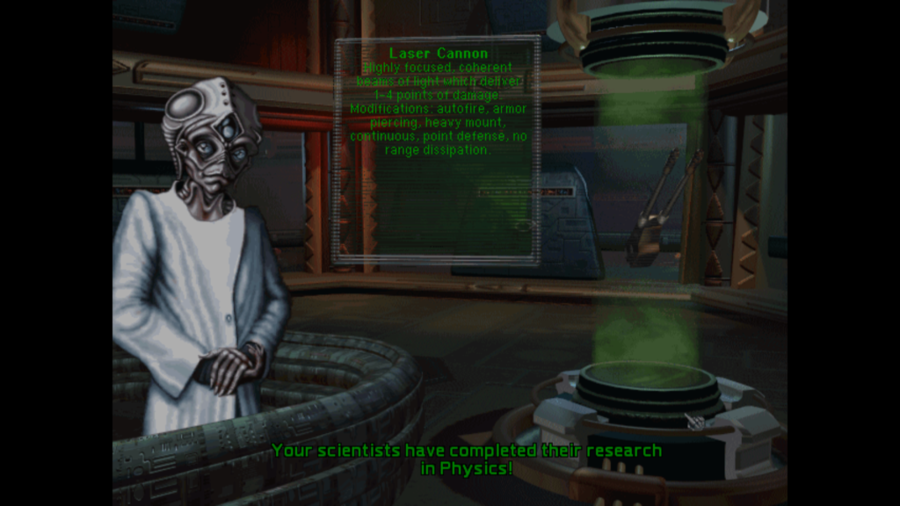
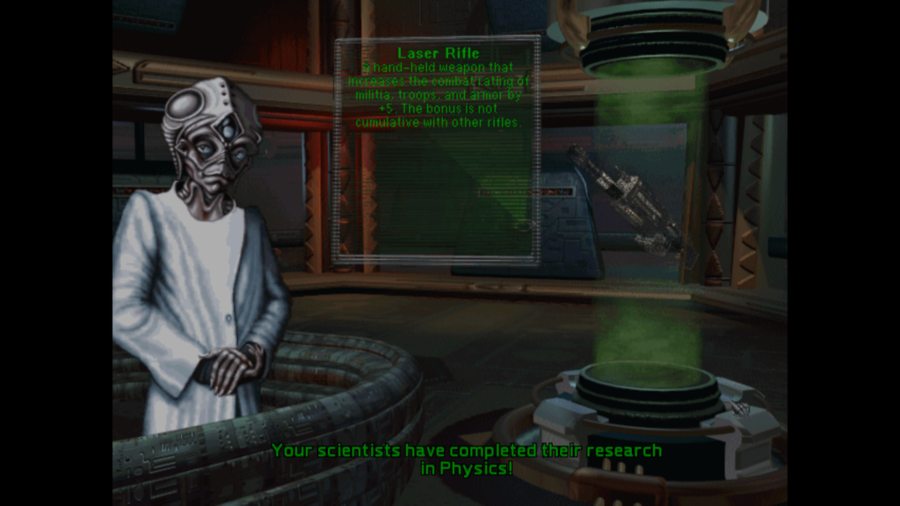
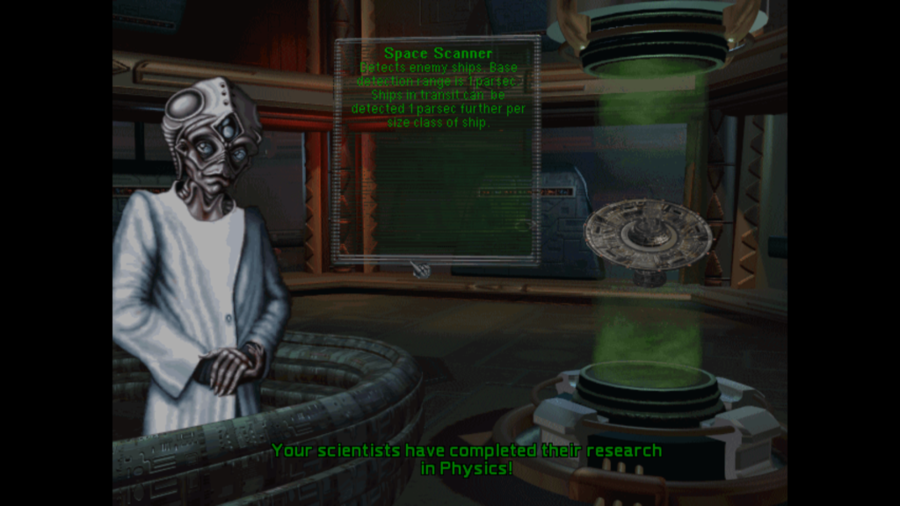
Two years later, review of the scientific data recovered by the Intrepid and Venturer led to a number of breakthroughs in basic physics. Although lasers had been known as a technology for many years, a firmer grasp on the underlying principles allowed for the development of compact, reliable, and efficient solid-state laser emitters that could serve effectively as weapons on any scale from hand-held personal weapons to starship weapons. Development of high-capacity single-use batteries even allowed the deployment of effective void-to-void lasers on high-performance small craft without a reactor of their own to power a ship-scale laser. Meanwhile, analysis of the faint traces in realspace left by travel in hyperspace let standard sensor arrays be tuned to sweep for evidence of FTL travel.
Sedan Insurance, the insurance provider for the shipyard orbiting over Nares, insisted at this point that the shipyard's owners either mount defensive weapons arrays against the risk of future piracy or suffer an increase in premiums. The shipyard consortium, in response, modified their original design to accept a number of launchers for nuclear shipkiller missiles- each nearly as large, in their own right, as a manned small craft, in order to produce the immense acceleration needed for their role- and an array of laser cannon.
Star Bases are armed, and now that we have all the basic weapons technology needed to arm one, I present it as doing so.
Meanwhile, massive investment had completed the colony mission that was to embark to the Vij system. Three years later, in 469 YE, the colony on the newly-named planet Sadesal would be established. With Sadesal now home to a Narestan population, the slow progress of a circle of trade between Vij and Tel became a reality.
Our high income means we can afford to rush-buy things earlier than might be expected.
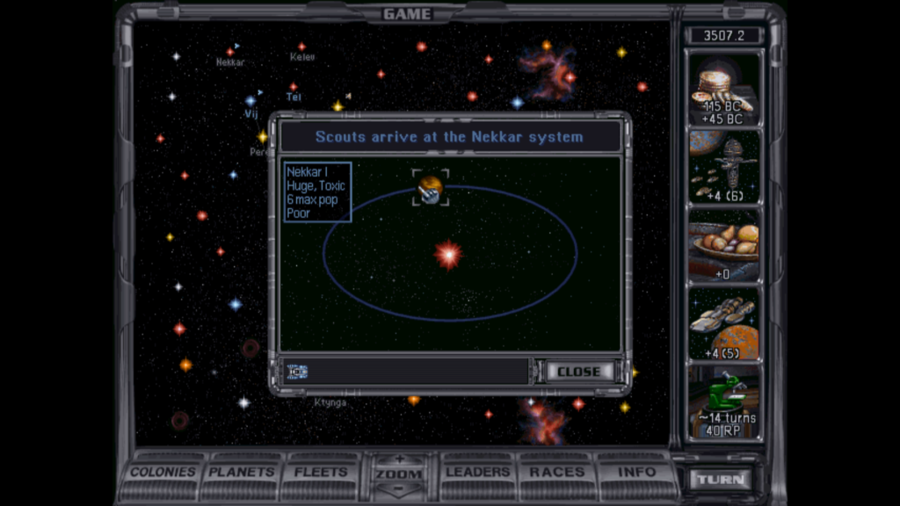
Three years following that colonisation, the red star Nekkar was explored by the Intrepid. In the inner system was only one body of particular note- a massive planet with concentrated acidic seas covering much of the surface and an atmosphere of highly corrosive vapors. Unfortunately, despite the planet's size, it seems a poor candidate for future colonisation.
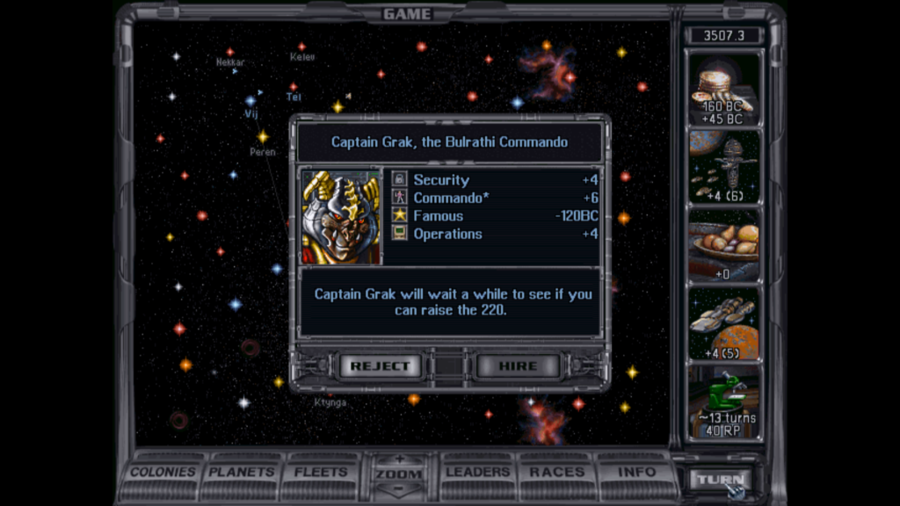
Discussion of the security challenges facing a FTL civilisation and hypothetical analysis of threat response tactics began to be a serious topic amongst security firms. Attention to interstellar command and control and logistics, if properly prepared for, might help allow for more efficient space security, while intensive training in established surface tactics and educational programs for promising security officers might help in future security actions and the cultivation of new talent.
Our expert commando leader will help discount future leaders (and existing leader upkeep costs), help us support more ships through the Operations ability, and helps make surface and boarding combat much more effective.
Development of Narestan planets and preparation for future colonisation continued steadily over the following years, slowly cementing the Narestan place amongst the stars.
Narestan Civilisation as of 480 YE
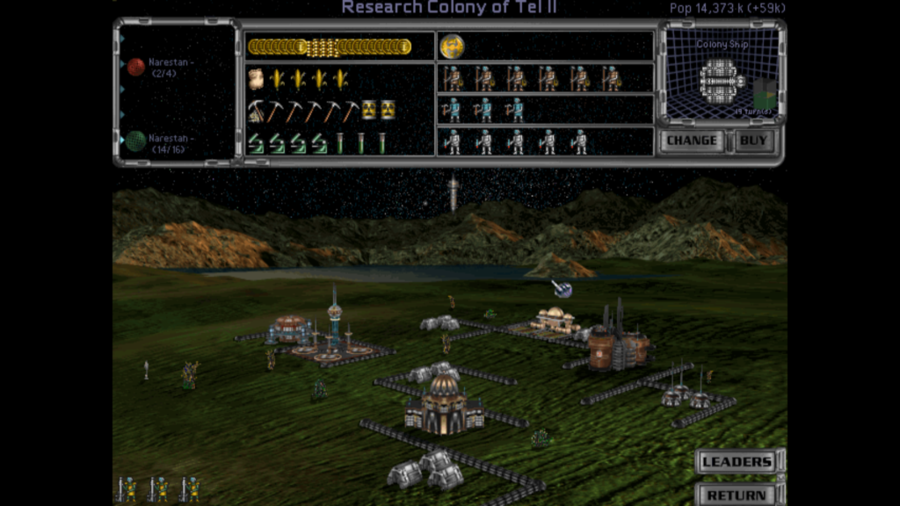
Nares now has nearly 14.4 persons in population, with population growth slowing as the cities continue to grow larger on the planet's surface. The ease of trade with other planets that its spaceport facilities has engendered has helped drive a massive increase in specialisation of industry on Nares, with the corresponding increase in productivity and local incomes. Colonists and investors for another interstellar colony mission are being gathered, with Narestan ambition eager to find what opportunity can be forced from the worlds within range.
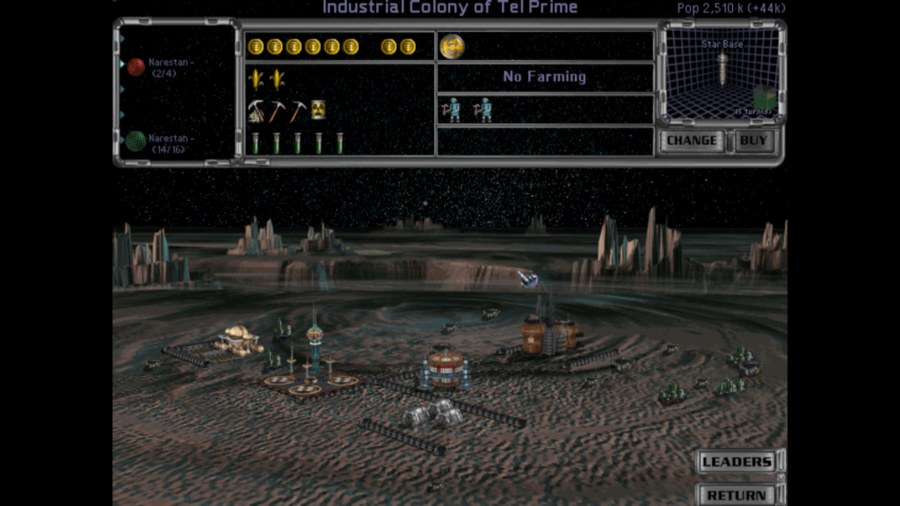
The growth of the local population, now over two and a half billion, coupled with growth in interplanetary trade has seen a massive leap in the the sophistication of Sedal's economy. Although its previous agricultural exports are a thing of the past, Sedal could continue to survive as a self-sufficient colony maintaining all its current infrastructure, while still benefiting from trade and specialisation between planets. Work continues steadily on an orbital shipyard over Sedal.
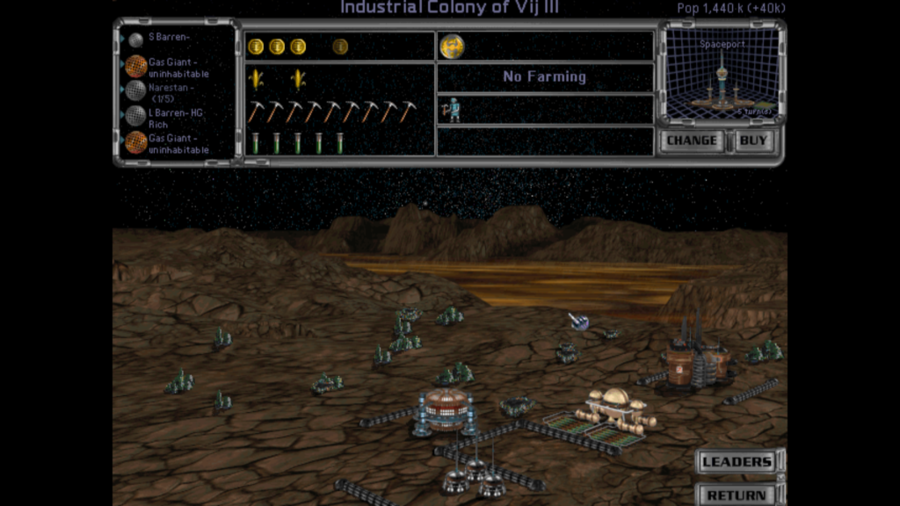
Sadesal, like Sedal before it, is a planet dependent on specialised imports from richer, more developed worlds to help support its rapidly-assembled infrastructure. Also like Sedal, it has relied on exports of agricultural produce from its sealed industrial farms and the export of basic scientific data and some high-tech components to finance needed imports. Construction of its own spaceport complex is under way on Sadesal.
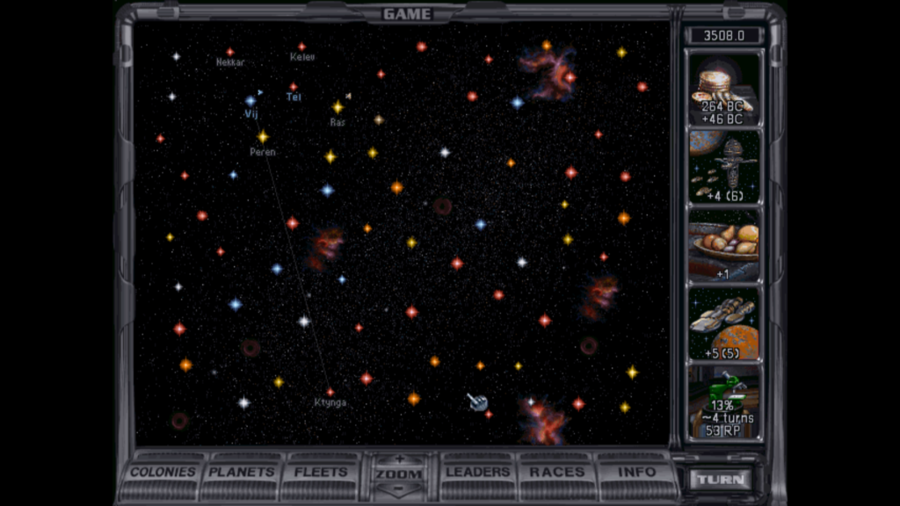
The past decades have seen a major surge in the rate of accumulation of investment capital, driven in large part by the growing network of Narestan trade. Innovation has increased slightly, primarily driven by the small scientific and technical community on Sadesal. Narestan civilisation now is a genuinely interstellar civilisation, although the stars beyond Tel remain fairly short of promise. Even so, the Narestans hardly intend to let this stop them creating a grander and richer civilisation amongst the stars.
Investment Proposals
Security Firm Organisation
Investment in security firms to help enable the implementation of the set of ideas discussed in the security community could have a number of long-run benefits, even if Narestan civilisation remains at peace as things stand.
Please vote on whether or not to hire our new expert commando leader.
Research Priorities
Development of advanced industrial robotics is well under way; other R&D funding has been flowing to biological and agricultural sciences, the development of improved drive systems, improved materials science, and the development of a formal theory of space warfare by security firms.
Please vote between Soil Enrichment, Fusion Drive, Tritanium Armor, or Space Academy for our next technology following Robo-Miners.
Colonisation Priorities
Peren Prime and Kelev Prime appear to be the least unpromising planets for colonisation in the immediate region, although which to prioritise first is still in discussion by mission planners.
Please vote between Peren and Kelev for our next colonisation target.
The steady improvement of Narestan prosperity has continued for the past two decades, with even greater breakthroughs to come soon. The Narestan people remain alone on the galactic stage, curious as to whether any other societies are there to be found amongst the stars.